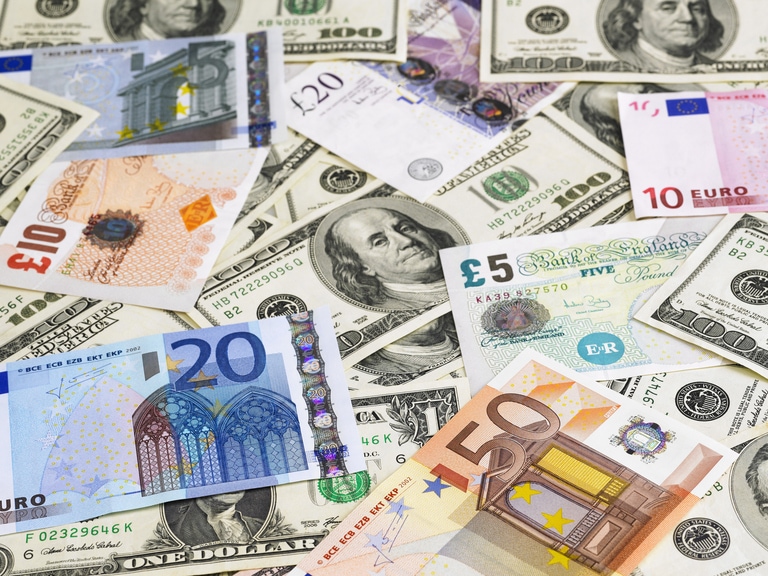We saw a broadly positive start to the week yesterday, with the France CAC40 posting a new record high of 7,401, while the FTSE100 lagged over disappointment around China’s GDP target for 2023.
This disappointment weighed on the mining sector yesterday after China set its 2023 GDP target at a fairly modest 5%, pointing to weaker demand for commodities. This target, which is below last year’s 5.5% target, suggests that the Chinese government is less likely to be as generous when it comes to helping to stimulate demand and economic activity. This focus on stability appears to be an acknowledgment that recent years have been far too generous and created areas of financial instability and that the focus now is a more conservative approach.
Today’s China trade numbers for February have seen a marked improvement in the wake of the sharp slowdown seen in the last 2 months of 2022, which saw the various rolling restrictions and lockdowns impact the Chinese economy markedly.
In Q4 the Chinese economy stagnated to the tune of growth of 0%, equating to annual GDP growth of 3%. With today’s trade numbers for the months of January and February covering the period over the Chinese New Year, we now have a better idea of how much the relaxation of lockdown restrictions may have unleashed pent-up demand, although they also come against a backdrop of the stronger comparatives of a year ago before the Omicron wave had taken hold.
Today’ s numbers have seen exports slide by -6.8%, which was slightly better than expected, while imports slid by -10.2% which was more than expected.
The Reserve Bank of Australia also raised rates as expected by 0.25% to 3.6%, as the central bank continues to navigate concerns about upending the mortgage market, against a backdrop of inflation that still looks very sticky. While the guidance was hawkish there was a slight softening bias suggesting the bank might be close to a pause, with the Australian dollar slipping back a touch.
Today’s main focus will be on the first day of testimony from Fed chairman Jay Powell to US lawmakers with questions likely to focus on the resilience of the US economy. There’ll be the usual showboating by some US politicians who will want the Fed to go easy when it comes to future rate hikes, along with those who think the Fed has dropped the ball when it comes to inflation.
The key focus will be on how Powell sees the US labour market, and whether the FOMC think that economic conditions have improved or deteriorated since the last Fed meeting. Markets will also be paying attention to whether Powell continues to peddle the same narrative of disinflation, which was a hallmark of his last press conference. If he acknowledges that inflation could be much stickier than the Fed thought over a month ago, that could prompt a pullback in US equity markets.
What is notable is that while US equity markets have recovered to the same levels they were at the time of the February Fed meeting after another strong finish yesterday, bond yields are much higher, with the US 2-year yield over 80bps higher, which suggests that once again there is a disconnect between what bond markets are pricing on inflation, and what equity markets are pricing.
Today’s European open looks set to be a positive one on the back of yesterday’s strong US close.
On the currencies front the euro outperformed yesterday as more ECB policymakers touted the prospect of further multiple 50bps rate hikes in the aftermath of the expected 50bps hike that is due to be delivered next week. Austrian central bank governor Robert Holzmann said the ECB should do 50bps hikes in March, May, June, and July, potentially taking the main financing rate to 5%. These comments followed comments from ECB chief economist Philip Lane who also acknowledged the need for further hikes, beyond next week’s meeting, stating that current high levels of inflation continue to be a concern for the ECB, and that core inflation momentum remains strong.
EUR/USD – continues to range trade between the recent peaks around the 1.0700 area and above trend line support from the recent 1.0530 lows. We need to push through the 50-day SMA at 1.0730 to open up 1.0820. While below 1.0730, the bias remains for a test of the January lows at 1.0480/85.
GBP/USD – continues to range trade between the 1.1920 area and the 200-day SMA, and the 50-day SMA at 1.2150 which remains a key resistance area. A break of 1.1900 retargets the 1.1830 area, while a break of the 1.2150 area is needed to retarget the 1.2300 area.
EUR/GBP – retesting trend line resistance at 0.8900 from the January peaks last week. Above 0.8900 targets the 0.8980 area. We need to push below support at the 0.8820/30 area to retarget the 0.8780 area.
USD/JPY – still below the 200-day SMA at 136.90/00 which is currently capping further gains. Support comes in at the 135.20 area. We also have interim support at 133.60. A break above 137.00 could see a move to 138.20.






